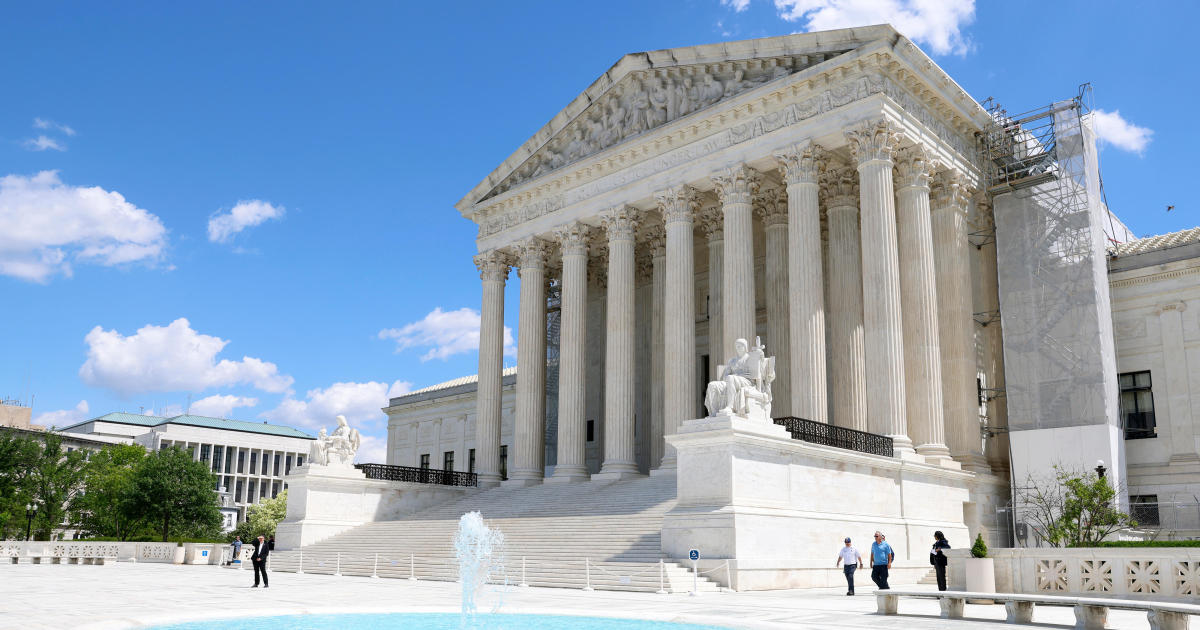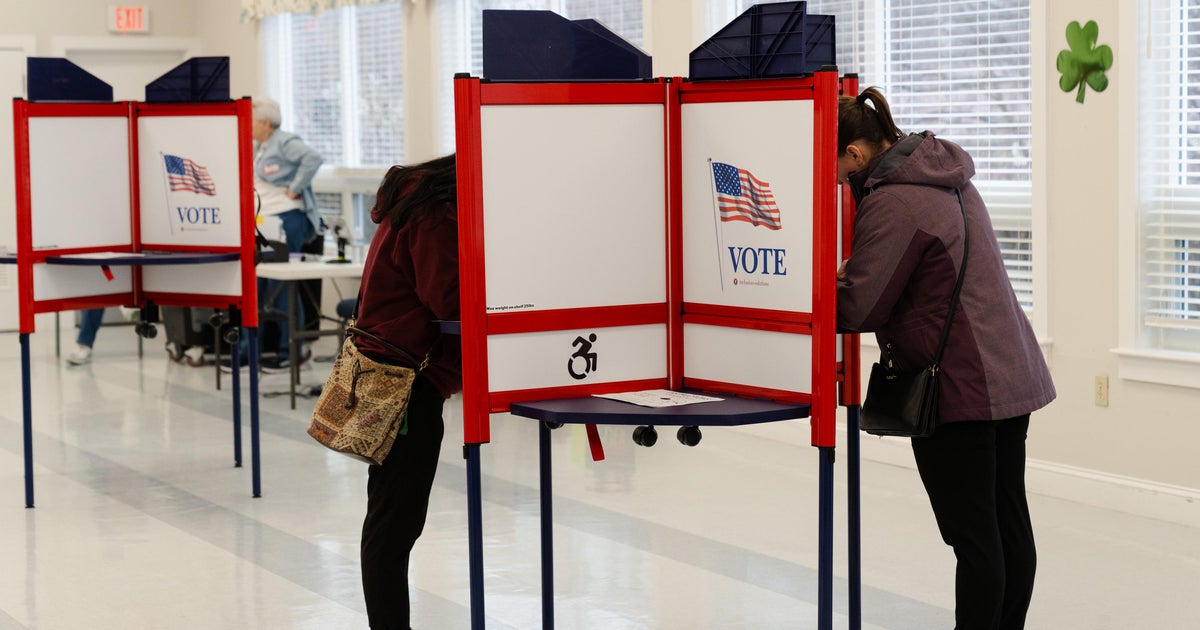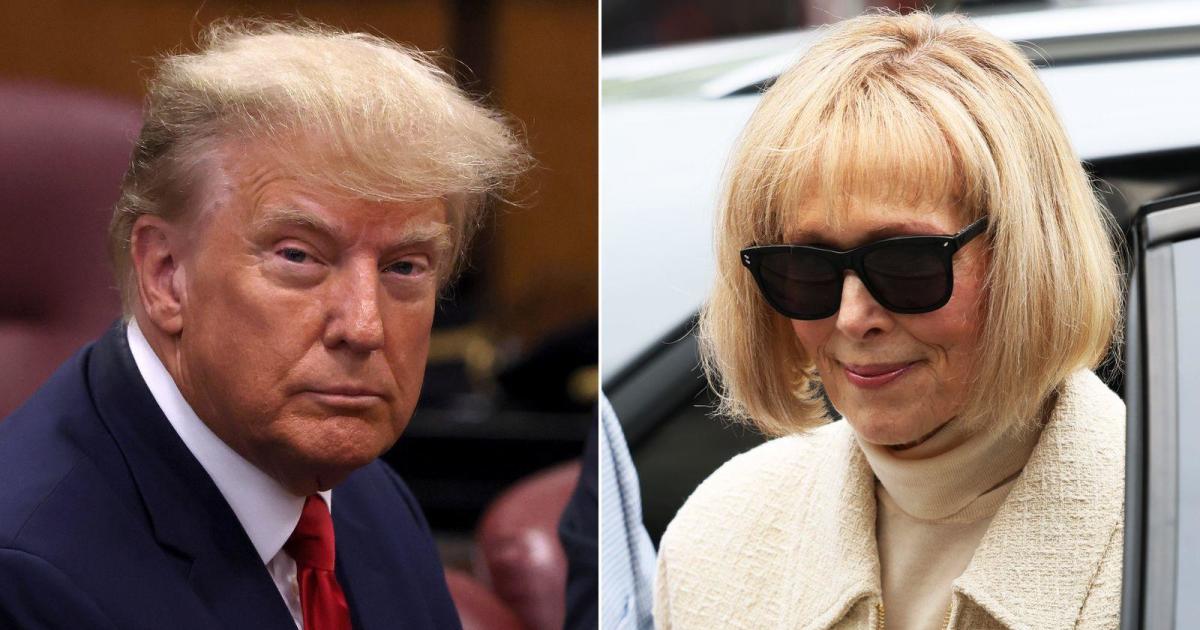Trump indictment key takeaways: What to know about the new charges in the 2020 election probe
Washington — A federal grand jury on Tuesday charged former President Donald Trump with four felony counts related to his efforts to remain in power following the 2020 election, with investigators from special counsel Jack Smith's office alleging a sprawling campaign by Trump and six unnamed co-conspirators to overturn President Biden's victory at the polls.
The 45-page indictment approved by the grand jury in Washington, D.C., described a series of actions allegedly taken by Trump to remain in power, an effort that ultimately culminated in a mob of his supporters storming the U.S. Capitol on Jan. 6, 2021, in a bid to stop the certification of electoral votes.
The indictment charged Trump with conspiracy to defraud the United States; conspiracy to obstruct an official proceeding; obstruction of and attempt to obstruct an official proceeding; and conspiracy against rights.
Trump and the alleged co-conspirators, the indictment said, carried out their monthslong "criminal scheme" to reverse the election results despite being repeatedly told by top federal and state officials, including Trump's political allies, that there was no evidence of widespread voter fraud that would have changed the outcome of the election.
The allegations in the indictment have not been proven in court. Trump has maintained he did nothing wrong and claims the prosecution is driven by political motives. He appeared for his arraignment in federal court in Washington on Thursday and pleaded not guilty.
Here are the key takeaways from the indictment, which can be read in full here.
Officials repeatedly told Trump there was no evidence of election fraud
In the indictment, prosecutors alleged Trump told "prolific lies" about the 2020 election, despite knowing that they were false. The indictment noted that Trump made numerous unsubstantiated claims about voting machines being manipulated to benefit Mr. Biden and large numbers of votes cast by dead or otherwise ineligible people.
Trump, the indictment said, "was notified repeatedly that his claims were untrue — often by the people on whom he relied for candid advice on important matters, and who were best positioned to know the facts and he deliberately disregarded the truth."
According to the indictment, former Vice President Mike Pence, a top U.S. intelligence official, Justice Department leaders, White House attorneys and state legislators told Trump that his claims of a rigged election could not be corroborated or that there was no evidence of fraud or election interference that determined the outcome.
Federal courts, the special counsel added, also rejected lawsuits filed by Trump and his allies that made claims about widespread election fraud.
Trump allegedly "enlisted" the help of six unnamed co-conspirators
The indictment referenced six unidentified co-conspirators whom Trump allegedly recruited to help him stay in the White House.
The co-conspirators, who have not been charged, were described as four attorneys who provided legal justifications for Trump's efforts and claims; a then-Justice Department official who tried to launch a "sham" probe into election fraud; and a political consultant who helped devise a plan to delay Congress' certification of the election by submitting "fraudulent slates of presidential electors."
"The Defendant and co-conspirators used knowingly false claims of election fraud to get state legislators and election officials to subvert the legitimate election results and change electoral votes for the Defendant's opponent, Joseph R. Biden, Jr., to electoral votes for the Defendant," the indictment said.
The false elector scheme
The indictment details an alleged scheme to have individuals aligned with Trump serve as alternate electors in seven states that he lost. The plan would have these electors act as if they were the legitimate electors, providing an alternate set of Electoral College votes that would tip the election in Trump's favor if they were recognized. The plan was laid out in three memos drafted by Co-Conspirator 5.
"The memoranda evolved over time from a legal strategy to preserve the Defendant's rights to a corrupt plan to subvert the federal government function by stopping Biden electors' votes from being counted and certified," the indictment alleged.
The memos detailed how the false electors "could mimic legitimate electors" in Arizona, Georgia, Michigan, Nevada, Pennsylvania and Wisconsin. New Mexico was eventually added to the list of contested states, despite Mr. Biden's large margin of victory in that state.
The electors signed certifications claiming Trump had won their respective states when the legitimate members of the Electoral College met in state capitals to cast their presidential votes on Dec. 14. The false electors then transmitted these phony certifications to the federal government.
The indictment details a sprawling alleged scheme to orchestrate the effort across the states.
"The Defendant and co-conspirators ultimately used the certificates of these fraudulent electors to deceitfully target the government function, and did so contrary to how fraudulent electors were told they would be used," prosecutors said.
A top Justice Department official's effort to delay election certification
A then-Justice Department official described in the indictment allegedly conspired with Trump to get the department to issue a letter containing false statements that could have given key state legislatures a basis to delay the election's certification. While the official is unnamed, the context makes clear that the official is Jeffrey Clark, whose role in the post-election push to overturn the results is well-documented.
Trump and Clark spoke several times in late 2020, the indictment said, despite policies and directives barring the official from speaking directly with the president "to guard against improper political influence."
Clark tried to get then-Acting Attorney General Jeffrey Rosen and Deputy Attorney General Richard Donoghue to sign a letter to state officials stating that the Justice Department had serious concerns about the election's integrity and urging state legislatures to convene and elect fraudulent electors. Clark told Rosen and Donoghue that Trump was weighing making him attorney general if they refused.
Rosen and Donoghue declined to sign the letter, however, noting that it included false information.
At one point, Rosen told Trump that the Justice Department "could not and would not change the outcome of the election," as the indictment put it.
"Just say that the election was corrupt and leave the rest to me and the Republican congressmen," Trump replied, according to the indictment.
Trump eventually relented in his plan to install Clark as attorney general "when he was told that it would result in mass resignations at the Justice Department and of his own White House Counsel," the indictment said.
Trump turned to Pence as Jan. 6 approached
As vice president, Pence was responsible for overseeing the joint meeting of Congress on Jan. 6, where the Electoral College votes would be formally counted and Mr. Biden would be confirmed as the next president.
As Trump's other efforts to remain in power floundered, he turned to Pence in a last-ditch attempt to get him to reject the electors.
"On several private phone calls in late December and early January, the Defendant repeated knowingly false claims of election fraud and directly pressured the Vice President to use his ceremonial role at the certification proceeding on January 6 to fraudulently overturn the results of the election, and the Vice President resisted," the indictment said.
In one conversation on Jan. 1, the indictment said, Pence reiterated his position that he did not believe he had the constitutional authority to overturn the election results. In response, Trump said, "You're too honest," according to the indictment.
On Jan. 4, Pence met with Trump and other officials, including Co-Conspirator 2. The indictment cited Pence's notes of the meeting to reconstruct the scene.
"The Defendant and Co-Conspirator 2 then asked the Vice President to either unilaterally reject the legitimate electors from the seven targeted states, or send the question of which slate was legitimate to the targeted states' legislatures," it said. "When the Vice President challenged Co-Conspirator 2 on whether the proposal to return the question to the states was defensible, Co-Conspirator 2 responded, 'Well, nobody's tested it before.' The Vice President then told the Defendant, 'Did you hear that? Even your own counsel is not saying I have that authority.' The Defendant responded, 'That's okay, I prefer the other suggestion' of the Vice President rejecting the electors unilaterally."
Despite Pence's position, Trump repeatedly claimed in public statements that the vice president could reject the Electoral College results, including on Jan. 6.
"[T]he Defendant made multiple knowingly false statements integral to his criminal plans to defeat the federal government function, obstruct the certification, and interfere with others' right to vote and have their votes counted," the indictment said. "The Defendant repeated false claims of election fraud, gave false hope that the Vice President might change the election outcome, and directed the crowd in front of him to go to the Capitol as a means to obstruct the certification and pressure the Vice President to fraudulently obstruct the certification."
How Trump reacted to the attack on the Capitol
The indictment laid out Trump's reaction as the mob of his supporters began to storm the Capitol. It says he watched the riot unfold on television from a dining room next to the Oval Office.
"Upon receiving news that individuals had breached the Capitol, the Defendant's advisors told him that there was a riot there and that rioters had breached the building," according to the indictment. "When advisors urged the Defendant to issue a calming message aimed at the rioters, the Defendant refused, instead repeatedly remarking that the people at the Capitol were angry because the election had been stolen."
Trump "repeatedly refused to approve a message directing rioters to leave the Capitol," despite pleas from his top advisers and lawyers. He ultimately released a video message later in the afternoon asking the rioters to go home, while calling them "very special" and saying that "we love you."
Later that night, as lawmakers were preparing to reconvene to resume counting the electoral votes, Trump and Co-Conspirator 1 were still trying to rally lawmakers to vote with them and reject states' electoral votes, the indictment said.
"At 7:01 p.m., while Co-Conspirator l was calling United States Senators on behalf of the Defendant, the White House Counsel called the Defendant to ask him to withdraw any objections and allow the certification," it said. "The Defendant refused."
The indictment's narrative ends by noting that "[a]t 3:41 a.m. on January 7, as President of the Senate, the Vice President announced the certified results of the 2020 presidential election in favor of Biden."




